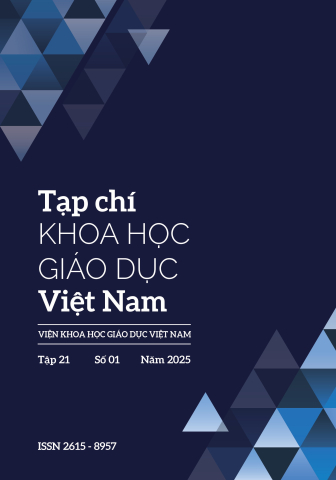[1] Thủ tướng Chính phủ, (2017), Chỉ thị số 16/CT-TTg của Thủ tướng Chính phủ về việc Tăng cường năng lực tiếp cận cuộc Cách mạng công nghiệp lần thứ 4
[2] Bộ Giáo dục và Đào tạo, (2020), Số: 3089/BGDĐTGDTrH về việc Triển khai thực hiện giáo dục STEM trong giáo dục trung học
[3] Liên hợp quốc, (2018), Khoa học, công nghệ và đổi mới cho các mục tiêu phát triển bền vững.
[4] Blackley, S. and R. Sheffield, (2016), Environment: Renegotiating the E in STEM Education. Eco-thinking, 1
[5] Carroll, M., et al., (2010), Destination, imagination and the fires within: Design thinking in a middle school classroom, International Journal of Art & Design Education, 29(1): p.37-53
[6] Scheer, A., C. Noweski, and C. Meinel, (2012), Transforming constructivist learning into action: Design thinking in education, Design and Technology Education: An International Journal, 17(3)
[7] Cook, K.L. and S.B. Bush, (2018), Design thinking in integrated STEAM learning: Surveying the landscape and exploring exemplars in elementary grades, School Science and Mathematics, 118(3-4): p. 93-103
[8] Uebernickel, F. and W. Brenner, (2020), Design Thinking: The Handbook, World Scientific
[9] Moreno, N.P., (2019), Strengthening Environmental Health Literacy Through Precollege STEM and Environmental Health Education, in Environmental Health Literacy, Springer, p.165-193.
[10] Ling, L.S., V. Pang, and D. Lajium, (2019), The planning of integrated STEM education based on standards and contextual issues of Sustainable Development Goals (SDG), Journal of Nusantara Studies (JONUS), 4(1): p.300-315.


